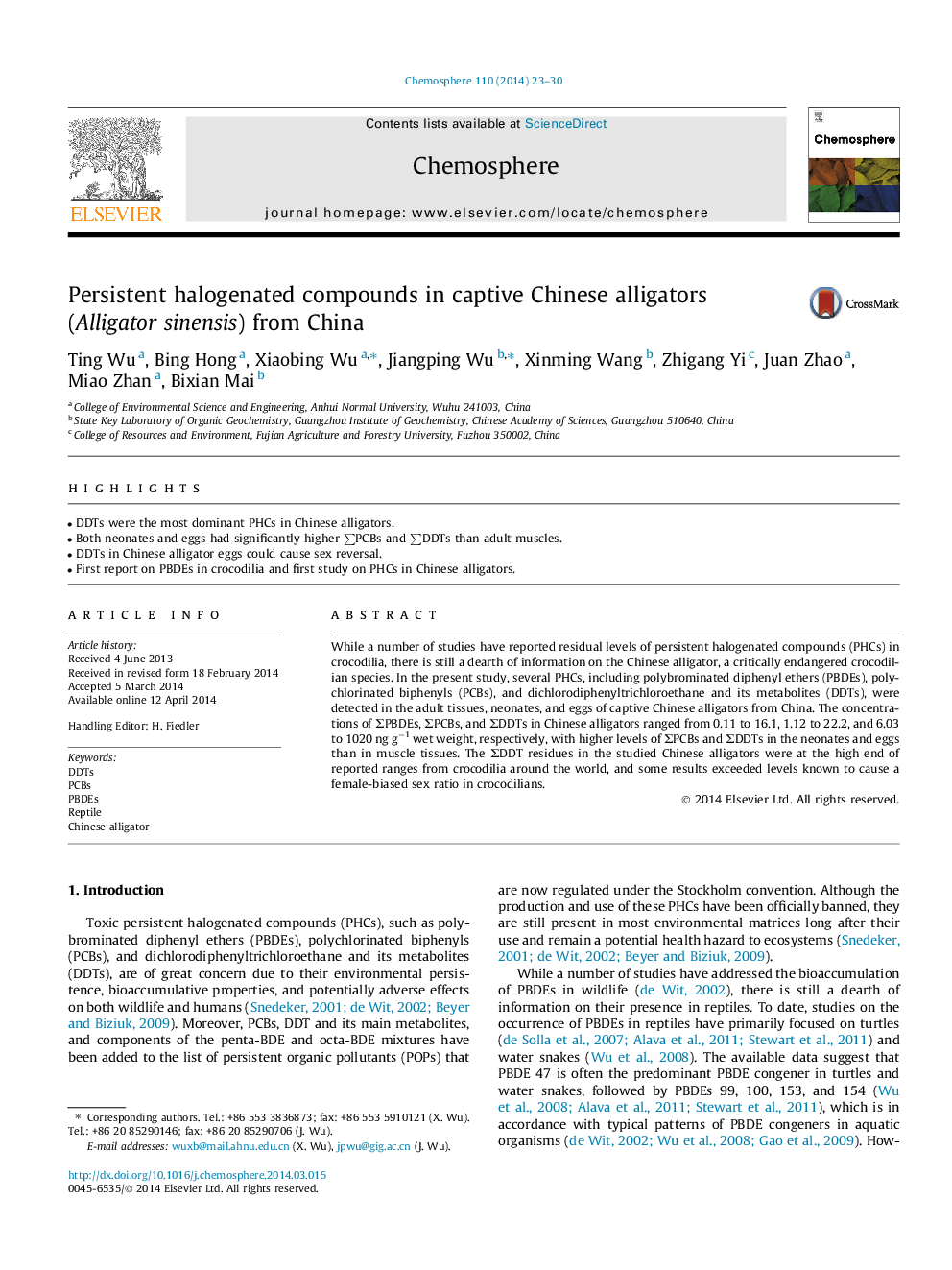| Article ID | Journal | Published Year | Pages | File Type |
|---|---|---|---|---|
| 4408727 | Chemosphere | 2014 | 8 Pages |
•DDTs were the most dominant PHCs in Chinese alligators.•Both neonates and eggs had significantly higher ∑PCBs and ∑DDTs than adult muscles.•DDTs in Chinese alligator eggs could cause sex reversal.•First report on PBDEs in crocodilia and first study on PHCs in Chinese alligators.
While a number of studies have reported residual levels of persistent halogenated compounds (PHCs) in crocodilia, there is still a dearth of information on the Chinese alligator, a critically endangered crocodilian species. In the present study, several PHCs, including polybrominated diphenyl ethers (PBDEs), polychlorinated biphenyls (PCBs), and dichlorodiphenyltrichloroethane and its metabolites (DDTs), were detected in the adult tissues, neonates, and eggs of captive Chinese alligators from China. The concentrations of ΣPBDEs, ΣPCBs, and ΣDDTs in Chinese alligators ranged from 0.11 to 16.1, 1.12 to 22.2, and 6.03 to 1020 ng g−1 wet weight, respectively, with higher levels of ΣPCBs and ΣDDTs in the neonates and eggs than in muscle tissues. The ΣDDT residues in the studied Chinese alligators were at the high end of reported ranges from crocodilia around the world, and some results exceeded levels known to cause a female-biased sex ratio in crocodilians.
